Jicama is the root of a plant called an angular cluster, a shrub belonging to the bean family. It is found in Mexico and other places with similar climates. It has purple or red flowers, trifoliate leaves, a fruit in the character of a pod with many seeds, and a tuberous root resembling celery. It is the root that is the edible part.
However, it's important to note that the globe plant's seeds, leaves, and pods are inedible due to their poisonous glycoside content. Despite this, the plant is valued for its highly nutritional tubers, which have a sweet taste and a texture similar to potatoes. As a result, it has found uses in culinary dishes and medicinal applications.
Jicama has a white, crunchy flesh with an apple-like taste, which does not lose its properties even when cooked. The root can reach large sizes, up to 15 inches in diameter. Jícama is the Spanish name of the plant-derived from Nahuatl, the language of the indigenous people of Central America. Translated, jicama in English means ‘something to taste.'
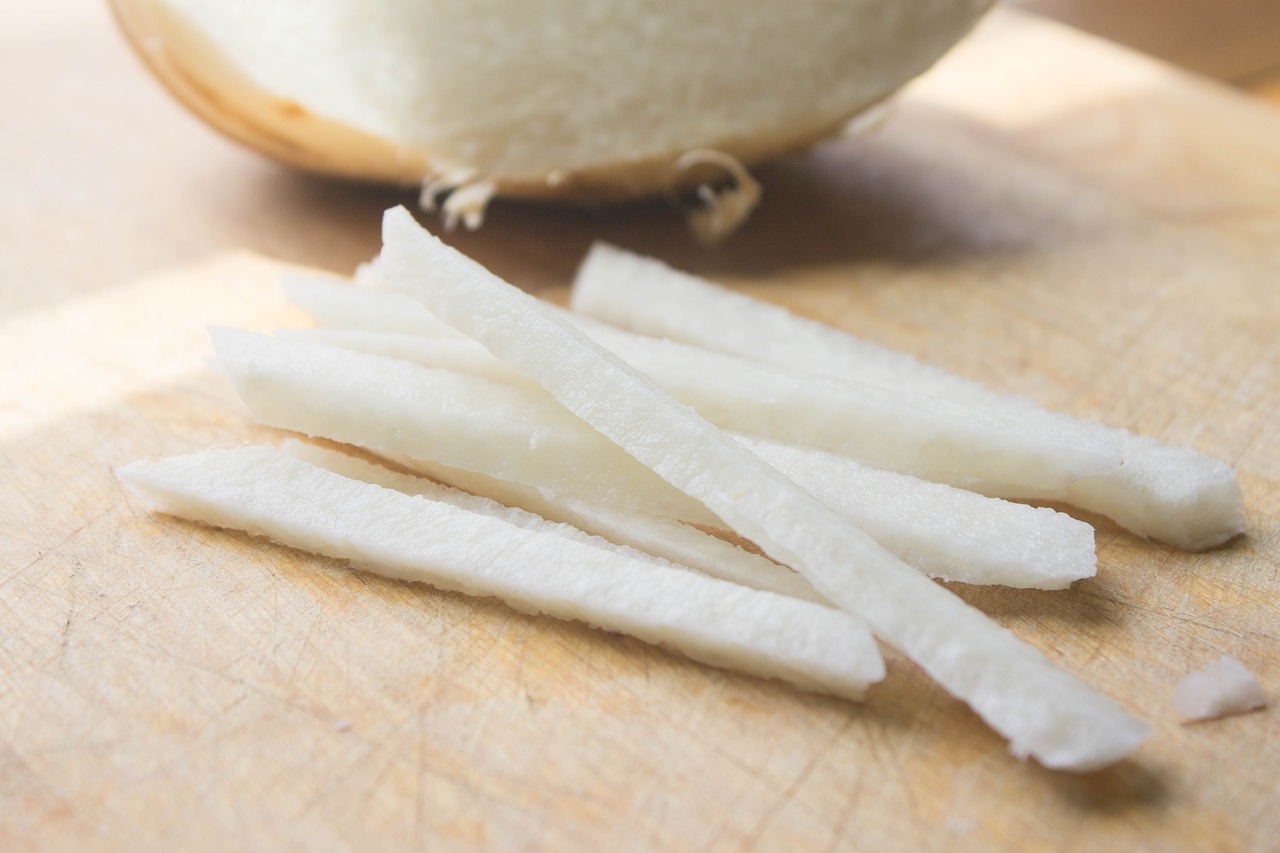
Jicama is a plant that can be divided into edible and poisonous parts. Jicama contains a glycoside in its leaves, pods, and seeds, which makes those parts toxic and unfit for consumption. The edible portion of jicama is the tuber, which should be eaten after skin removal. The vegetable can be enjoyed raw.
Jicama can be safe for dogs to eat but requires proper preparation. Removing any toxic parts of the plant, such as the peel and seeds, is essential before giving it to your dog. To do this, peel the jicama and cut it into small pieces.
If you have jicama growing in your garden, ensure your dog doesn't bite or consume the plant. Remember that moderation is vital, and dogs should not consume excessive jicama.

Jicama is not a fruit. The plant is qualified as a root vegetable. In appearance, jicama can resemble a potato, and the white, crunchy flesh, in taste, resembles an apple. From a botanical point of view, jicama has a fruit, but it is not an edible root part. The fruit of the jicama is a pod with many seeds.
Jicama is a climbing plant that grows year-round and has an edible root. It forms a semi-bush shape. The main producers of jicama are found in Mexico and Central America, but it can also be grown in home gardens with the right conditions.
Temperature – Temperature is an important consideration for growing jicama. While the plant can adapt to changing weather conditions quickly, it is sensitive to low temperatures. Planting jicama at least eight weeks after the last frost is recommended. The ideal soil temperature for successful growth of jicama is around 27°C/80°F.
Space – Jicama doesn't require a lot of space, but it's important to sow the plants at a suitable distance of at least 12 inches. A good site for growing jicama should have ample sunlight. While this plant can be grown indoors, it thrives better outdoors. If you do decide to grow it indoors, make sure to provide adequate light for optimal growth.
Soil – To successfully grow jicama, it's important to have moist and fertile soil. One key factor for successful growth is ensuring an adequate potassium level in the soil. Potassium plays a crucial role in increasing crop yield and quality, regulating nitrogen absorption, managing water in the plant, and enhancing its resistance to stressful conditions.
Watering – When growing jicama, it's important to ensure the soil is moist but not overly wet. Therefore, regular watering is necessary. However, it's best to water directly into the ground and avoid getting the leaves wet.
Timing – Jicama is a fast-growing plant. It can be harvested approximately 150 days after planting, allowing for the first harvest. While it's possible to harvest jicama sooner, such as after four months, the roots will be smaller.
Harvesting – When the jicama has matured, it's time to gather the tubers by carefully digging them out of the ground. Make sure to remove the vines altogether. The harvested jicama roots should be stored in a cool, dark place for up to two months.
Common Issues – Jicama plants are susceptible to fungal diseases. To prevent them, it's essential to water the plant in the morning and avoid overwatering. Another possible issue is bacterial blight, which causes white spots on the leaves. This can be avoided by watering the plant to prevent water from getting on the leaves, such as using a drip or soak method instead of spraying water directly onto the foliage.
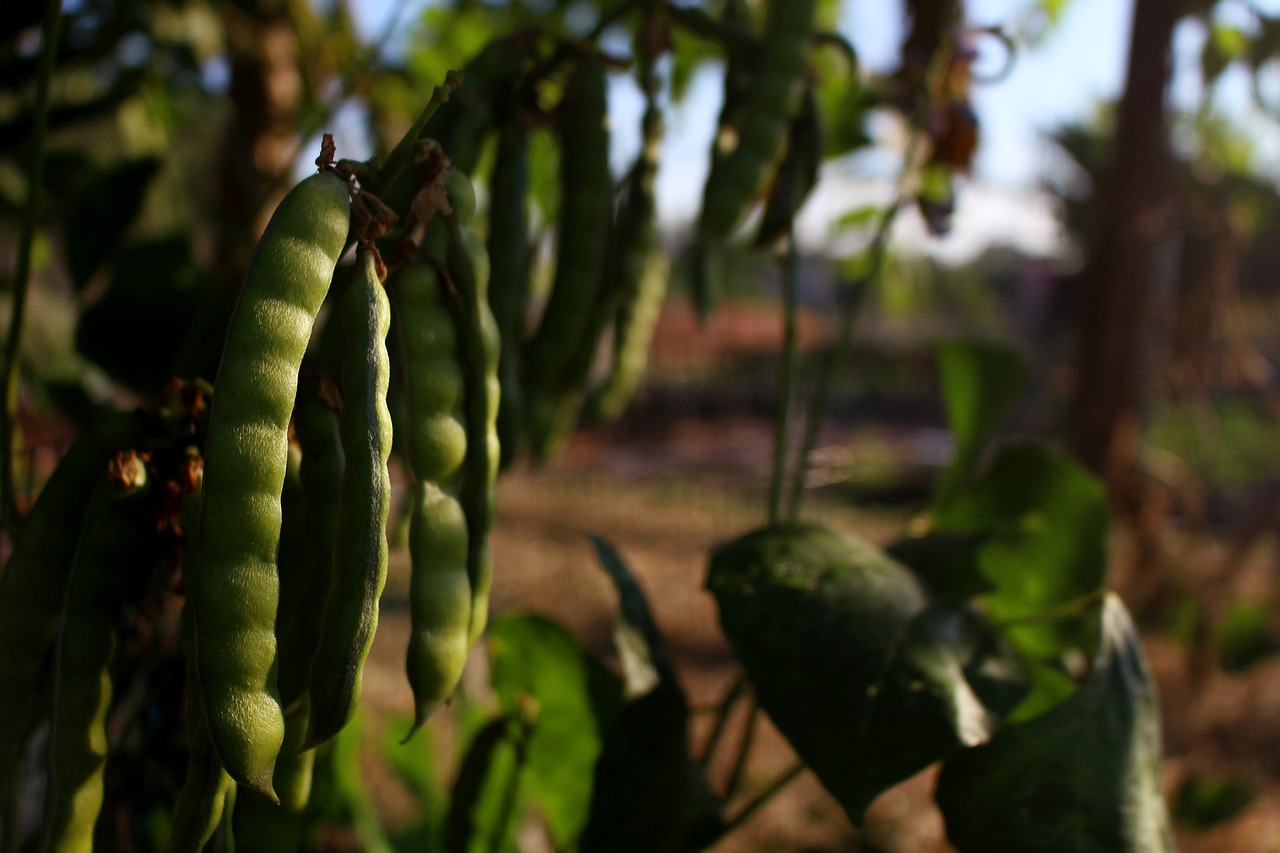
Jicama is known for its high water content, containing up to 80% water. It also provides various valuable nutrients. The nutritional composition of jicama can be influenced by heat treatment, particularly in high-temperature vitamin C reduction. Additionally, the production level and environmental factors such as soil type and harvest time can affect its nutrient content. Jicama contains the following nutrients:

Vitamin C – Jicama is also a great source of vitamin C, with just one serving providing almost half of the daily recommended amount. Vitamin C is an important antioxidant that helps to fight off harmful free radicals in the body, which can contribute to various diseases, including cancer, inflammation, and even the common cold. By consuming jicama, you are protecting your body against these health issues.
Vitamin B – Jicama is a valuable source of B vitamins, including folate and vitamins B1, B2, and B5. These nutrients are vital for the optimal functioning of the muscular and nervous systems. Adding jicama to the diet of physically active individuals or during periods that demand heightened concentration can enhance overall performance and increase efficiency.
Potassium – Jicama is also rich in potassium, an essential nutrient for maintaining a healthy heart and circulatory system. Consuming this vegetable helps prevent deficiencies of this valuable component, reducing the risk of cardiovascular disease.
Phosphorus – Jicama is also a good source of phosphorus, an essential element that plays a vital role in the health of our skeletal and muscular systems. Phosphorus works alongside calcium to support the mineralization process of our bones and teeth. It also helps build strong, soft tissues and cell membranes throughout the body. Regular consumption of jicama can help prevent muscle diseases associated with phosphorus deficiencies.
Iron – Jicama is also a good source of iron, an essential element for the production of blood cells. Iron deficiency can lead to fatigue, excessive hair loss, headaches, and anemia. Including jicama in your diet can help prevent these issues.
Calcium – Jicama contains calcium, an essential mineral for maintaining strong bones. It is particularly beneficial for older adults and women going through menopause, who are at a higher risk of calcium deficiency.
Dietary fiber – Jicama contains a noteworthy amount of dietary fiber worth mentioning. The fiber in jicama, specifically inulin, acts as a prebiotic, benefiting the intestinal microflora. Additionally, the fiber boosts feelings of fullness or satiety.
Inulin – Inulin is a dietary fiber that plays a crucial role in regulating blood glucose levels, making it beneficial for individuals with diabetes. Additionally, it functions as a prebiotic, serving as nourishment for beneficial bacteria in the gut. These bacteria aid in efficient and smooth digestion. Including vegetables rich in inulin in one's diet can also help reduce the risk of colon cancer.
Phytoestrogens – The use of jicama in natural medicine is also due to its antiviral properties. Jicama owes these to the presence of compounds such as phytoestrogens. The tuber containing phytoestrogens is also one of the products used to alleviate the symptoms of menopause and to prevent and treat osteoporosis.

Jicama is a low-calorie plant. The vegetable is an excellent choice for individuals with diabetes due to its low glycemic index. Additionally, it is common in calories and easily digestible, making it suitable for those trying to lose weight.
Jicama is an excellent addition to a healthy diet because its roots contain dietary fiber. This helps you feel full for longer, reducing the urge to snack and helping maintain a balanced body weight.
That's why jicama is often recommended for people trying to lose weight or follow a healthy diet. Be careful, however, as jicama contains carbohydrates and starch, so the vegetable should not be eaten excessively if you are on a weight loss diet.
Consuming excess carbohydrates can lead to fat accumulation when our energy intake exceeds what we need. While starchy foods are not entirely high in calories or fat, they can contribute to weight gain if consumed excessively or paired with fatty side dishes.

Due to its various nutrient content, jicama positively affects health and is a recommended dietary ingredient for specific groups. The benefits of jicama include:
Prevention of diabetes – Despite its sweet taste, jicama has a low glycemic index. This makes it a recommended food for preventing and managing type 2 diabetes. Studies have shown that extracts from this plant can help regulate post-meal blood sugar levels and improve insulin sensitivity.
Prevention of osteoporosis – Jicama extract shows beneficial protective effects against osteoporosis. There was an increase in the density of bone and the content of minerals. Researchers suggest that phytoestrogen compounds in jicama may protect the skeletal system, particularly in postmenopausal women.
Immune system support – Jicama and its extract have a history as an antiviral agent in traditional medicine. Some components of this vegetable have been shown to have antiviral effects on current and emerging viruses.
Cardiovascular protection – Jicama contains phytoestrogens that offer protection against cardiovascular disease. Jicama also has a fair amount of potassium, which makes it helpful in promoting heart health, as vegetables and fruits high in potassium are associated with a lower possibility of heart disease.
Anti-inflammatory effects – Jicama has anti-infective properties and acts as a potent antioxidant. It helps eliminate free radicals, protecting against cancer, inflammation, viral coughs, colds, and infections. The high vitamin C content in jicama contributes to its potent antioxidant properties, effectively neutralizing free radicals that contribute to the development of various diseases.
There are various ways to enjoy jicama. One simple and popular way is to eat the root raw after removing any toxic plant parts.
Wash – It is important to wash root vegetables like jicama before consuming them. Washing vegetables and fruits is crucial for preventing foodborne illnesses. Even if we peel them, the bacteria during peeling will be transferred to our hands, from where they will very quickly end up in our mouths.
Peel – The jicama tubers should be eaten without the skin. It is essential because it contains the toxic rotenone. It can be peeled just like potatoes. Also, remember to relieve the protruding roots.
Slice – When it comes to slicing jicama, there are various methods you can choose from. The most common approach is cutting it into matchstick-sized oblong pieces. Once you've peeled the vegetable, it's ready to be enjoyed.
Methods of serving – Ways to enjoy Jicama include eating it alone or adding seasoning and other flavors. Bringing lime juice over the vegetable is a common way to enhance the taste. Jicama can also be added to salads and other dishes.
Jicama is a versatile vegetable that makes an attractive addition to a salad, salad, or stew. It pairs well with fruits such as apples or oranges but equally enhances the flavor of meats and seafood. Mexicans cool the tubers before eating and sprinkle them with lime juice and chili pepper powder. Discover our recipes with jicama and test them in your kitchen!
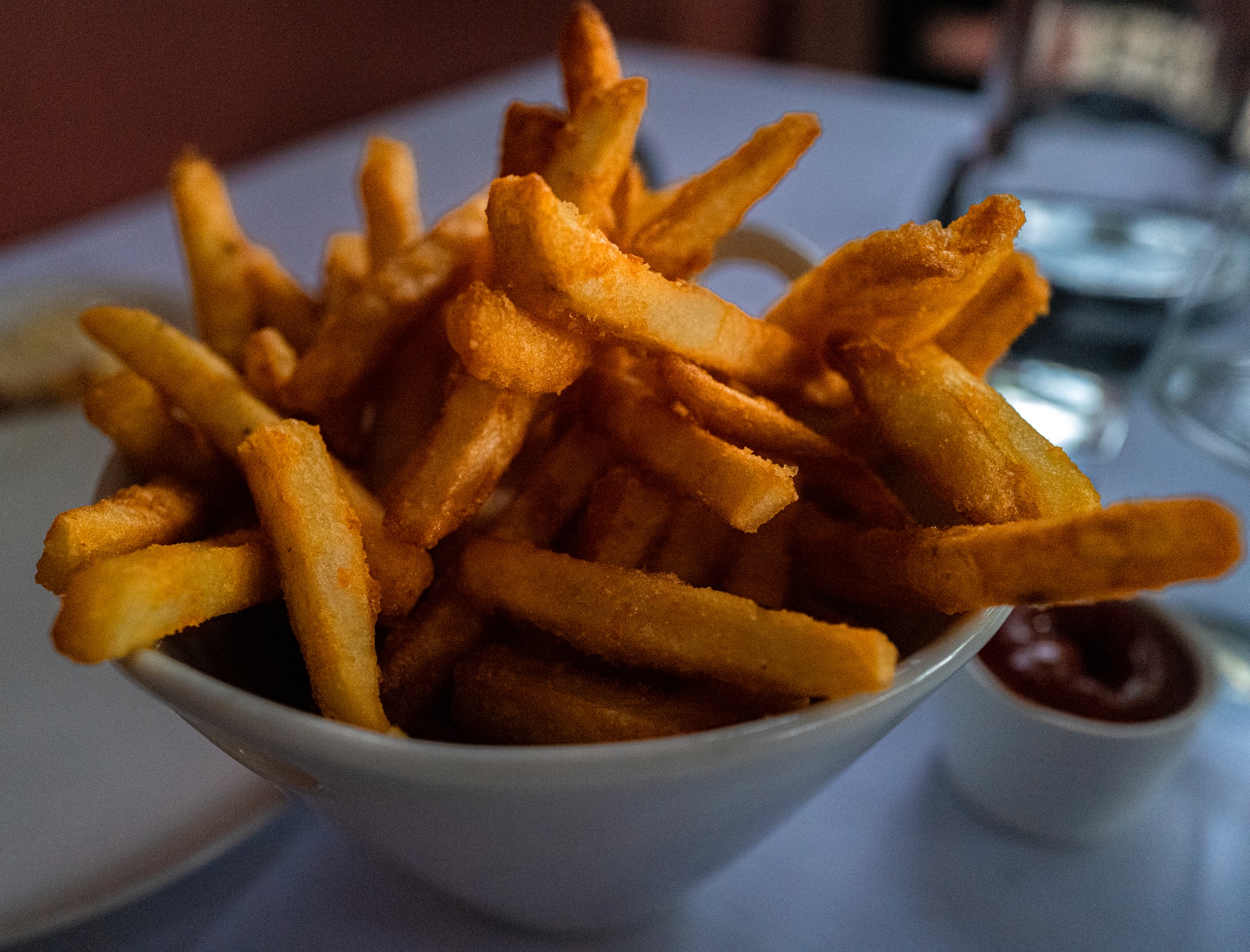
Try a perfect snack that both kids and adults will enjoy. Jicama offers a delightful sweetness, making this alternative to potato fries even more appealing. For an extra kick of flavor, try dipping these crispy fries into some refreshing guacamole or salsa.
Wash, peel, and slice the jicama. Thoroughly combine the jicama with the oil and spices. First, wash and peel the jicama. Then, slice it into your desired shape. In a large bowl, thoroughly mix the jicama with oil and spices. Transfer the coated jicama to a baking dish or line it on baking paper. Bake the jicama for 40 minutes at 200°C/400°F. Serve with your favorite sauce.
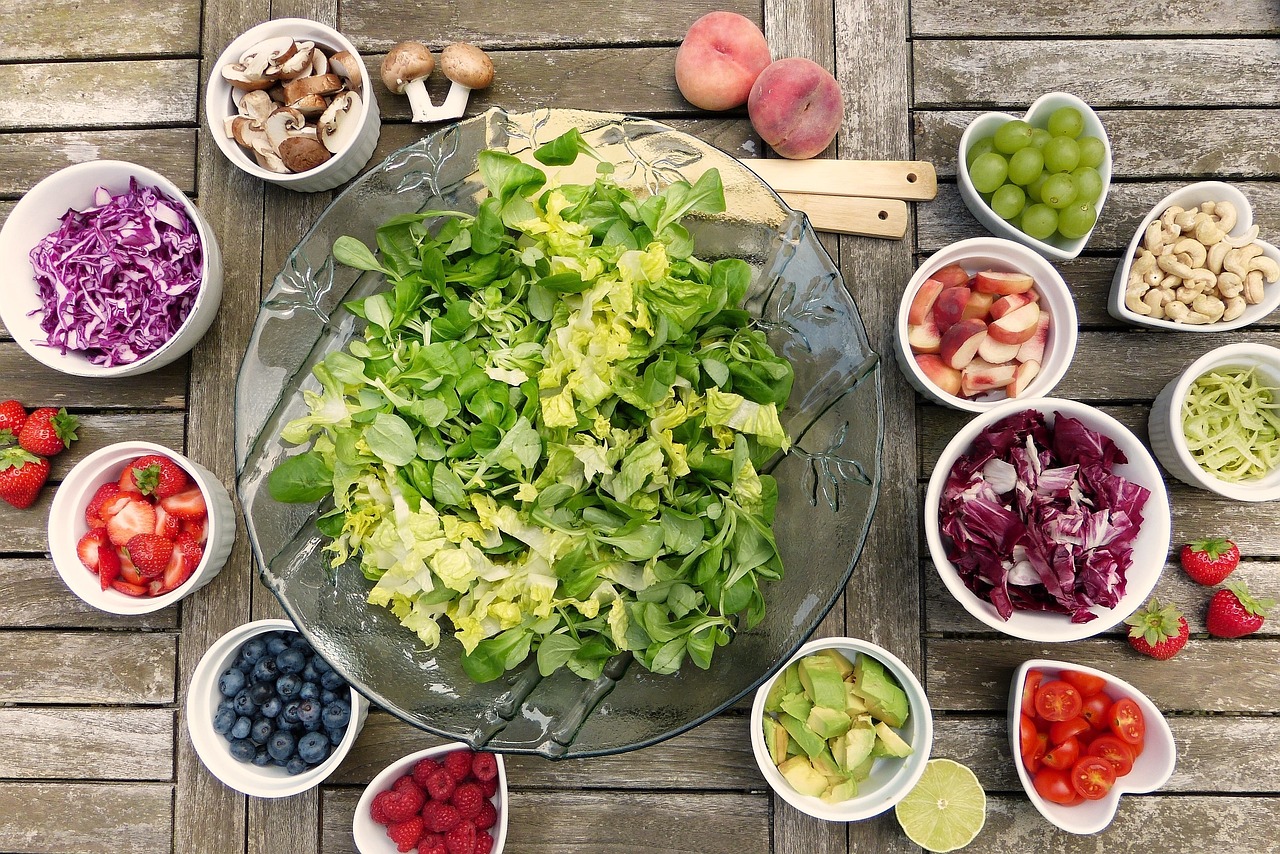
To incorporate healthy eating into your diet, starting with salads is a significant step. They provide satiety and essential nutrients. One tasty option is a jicama salad with beans, offering both delicious flavor and health benefits.
First, wash the jicama and then peel and dice it. Next, add a can of beans, some chopped tomato, and onion to the mix. Combine everything with the salad mix. In a separate small dish, squeeze out the juice from one lime. Add in the pressed garlic clove and olive oil. Even pour this dressing over the salad. Finally, sprinkle some cumin and salt to enhance flavor according to your taste preferences.
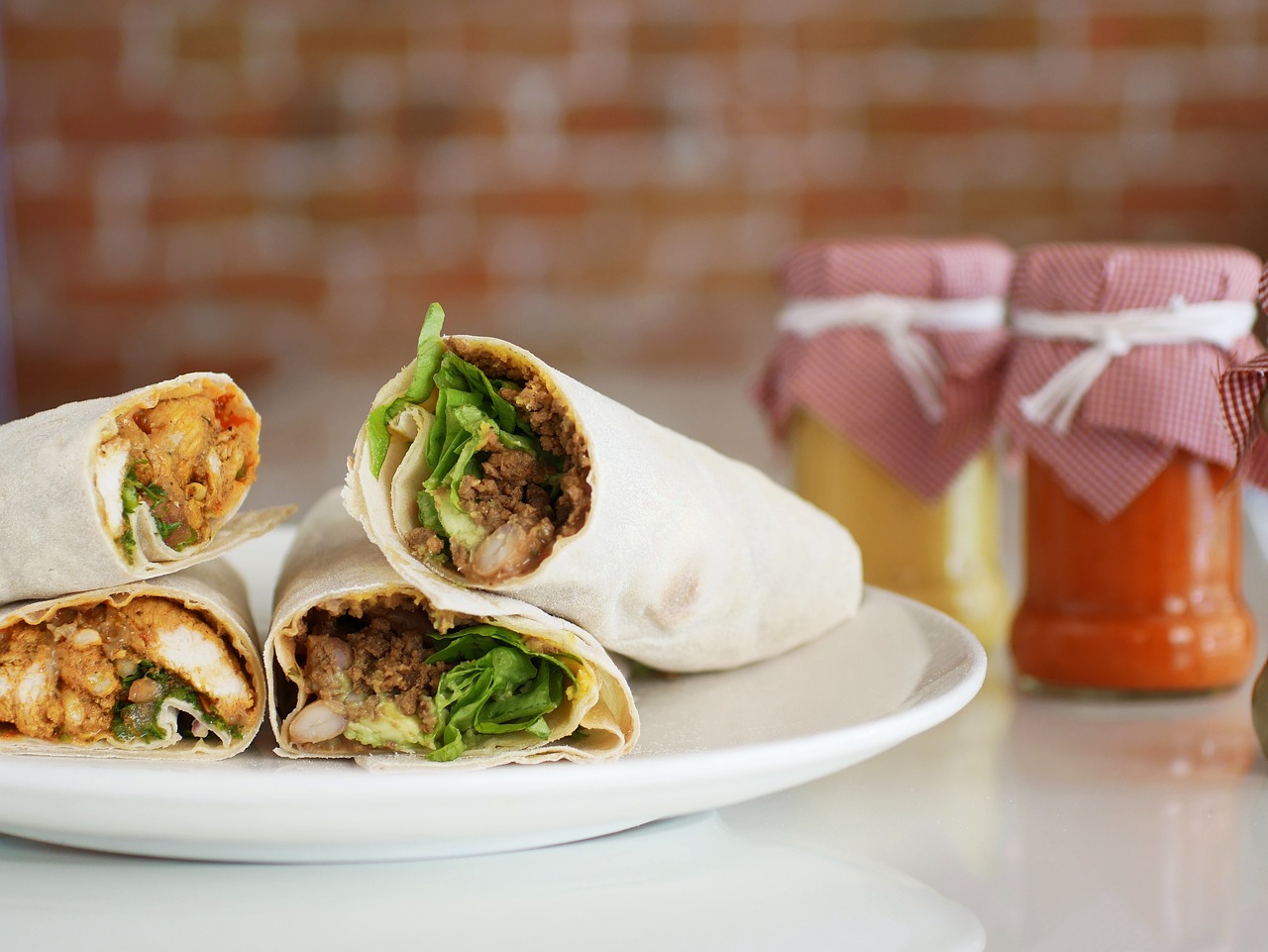
Looking for a tasty and satisfying main course? Give our jicama wraps a try! These delicious wraps are not only perfect for parties, but they also offer a unique and delightful taste. This recipe serves two portions. If you want more, increase the amount of ingredients.
Cut the chicken breast into small pieces. Season the chicken with the seasoning mix and let it sit for about 10 minutes. Fry the chicken until it turns a golden brown color. In a small bowl, mix yogurt and tahini, and add some pepper and salt to taste. Dice up the vegetables. He up the wraps in a pan. Fill each wrap with the diced vegetables and cooked chicken, then drizzle some tahini sauce on top. Fold each wrap in half and cut it in half before serving.
Table of Contents
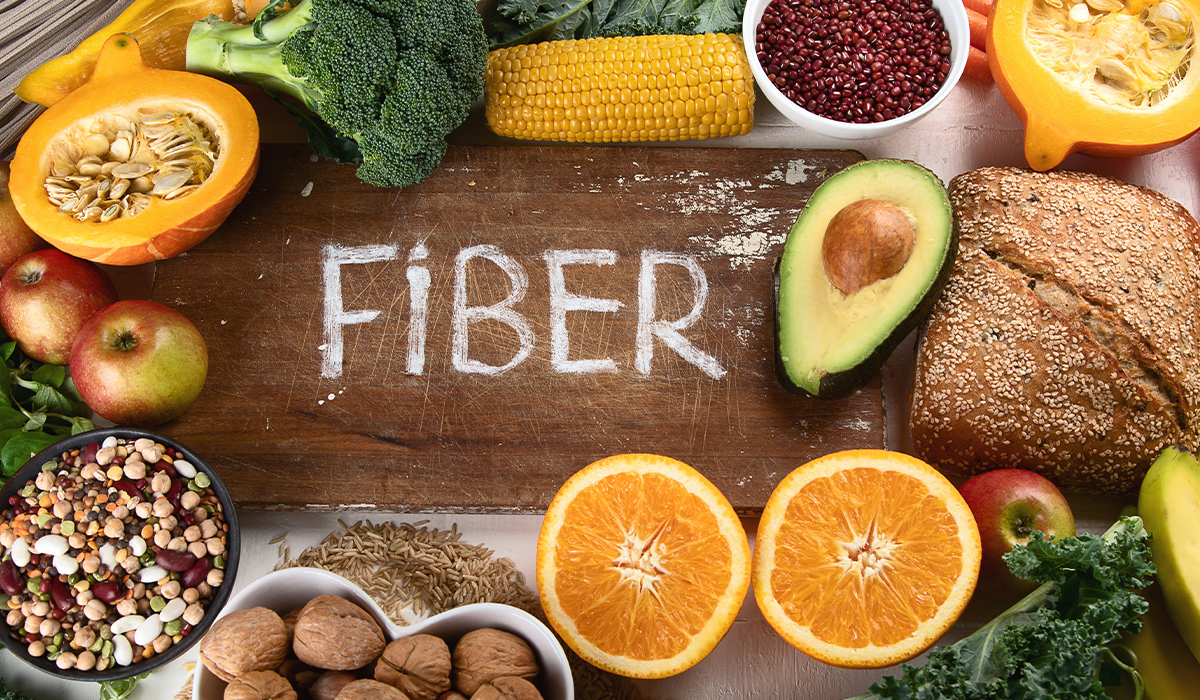
Do you know how eating high fiber foods will affect your health? Learn all about fiber and how it affects… read more »
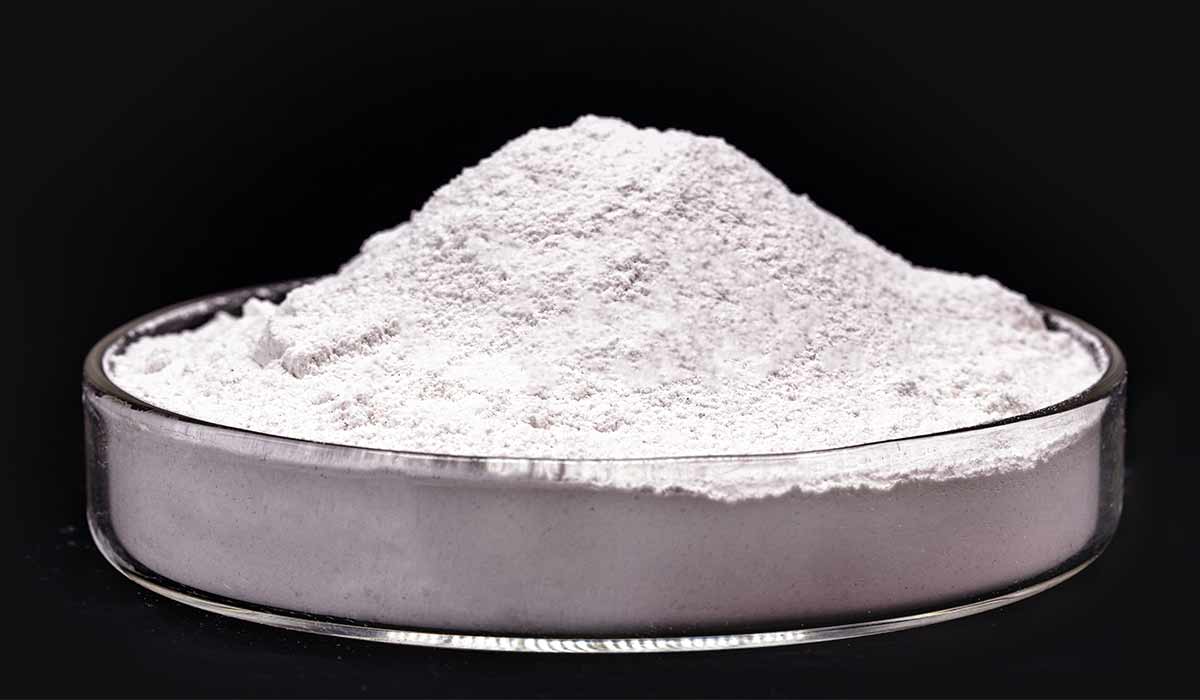
Hypokalemia means potassium deficiency, a decrease in potassium in blood below 3.5 mmol/L. It can have various causes, and most… read more »

Papaya, a fruit cherished for its flavor and health benefits, offers a variety of culinary options for incorporating it into… read more »

A chemical peel is a procedure that helps to improve the condition of the skin. In some conditions it is… read more »

Can eating bananas be dangerous for some people? Who is more susceptible to hyperkalemia? read more »

Garlic is a vegetable with many health benefits. But it also has side effects and contraindications. Expand your knowledge of… read more »
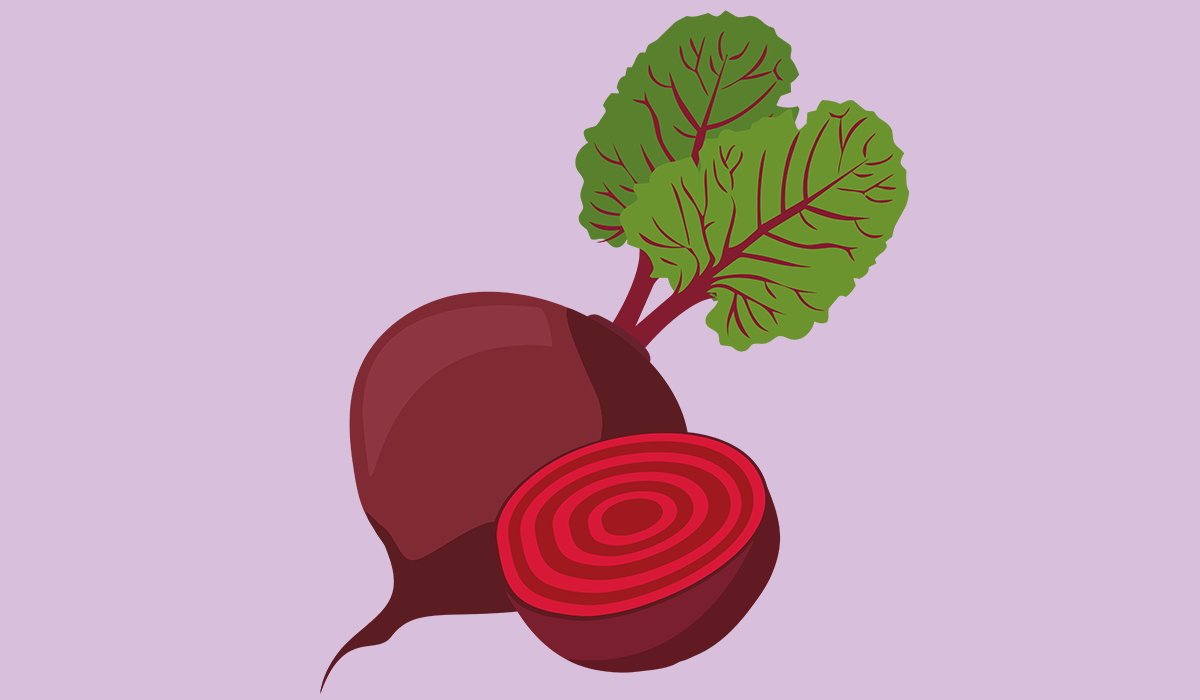
Beetroot is a very healthy vegetable full of many bioactive elements. Learn about the numerous health benefits of these plants… read more »

Lychee is a fruit known for its exceptional flavor. Discover the health benefits of incorporating lychee into your diet, and… read more »
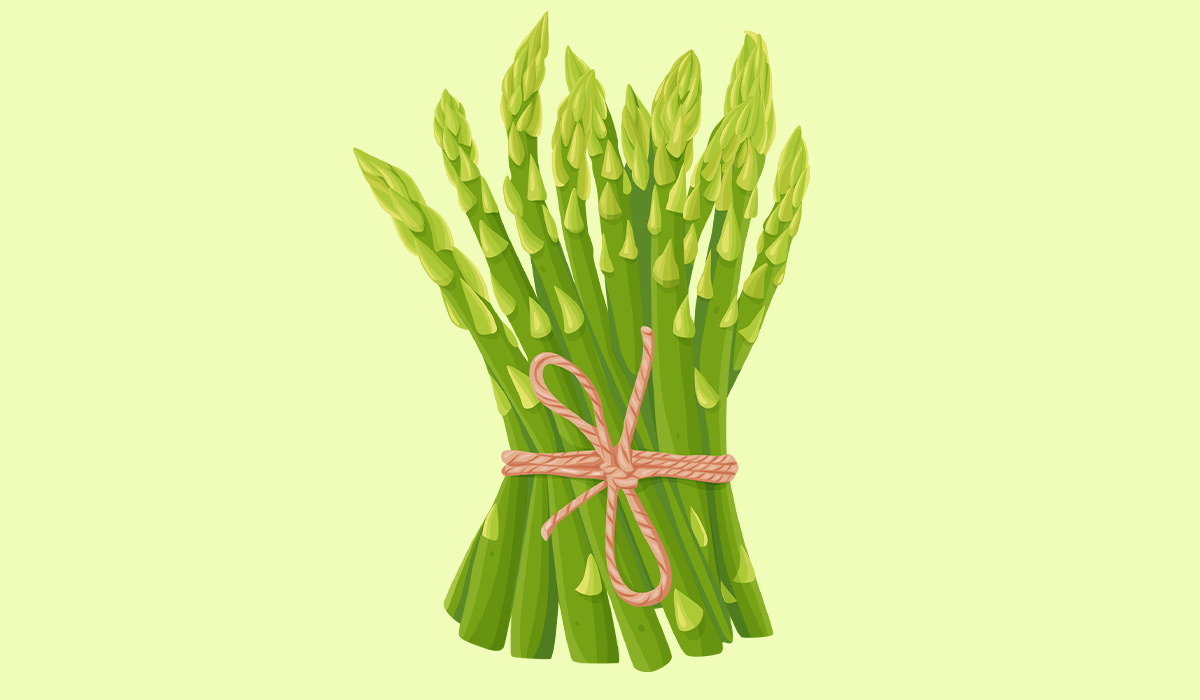
Asparagus is a vegetable that has an extraordinary flavour and remarkable properties. Learn about the advantages and disadvantages of the… read more »